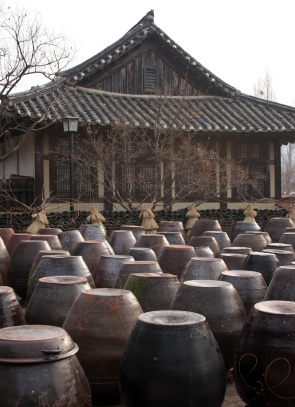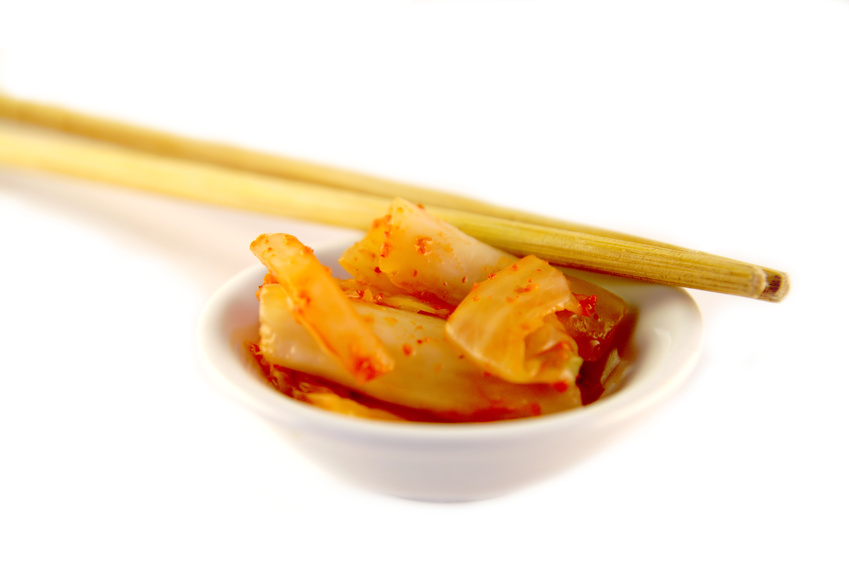There is no document that says On this day kimchi was first made, for kimchi predates the written word. But the earliest record we have of kimchi is found in the Book of Odes, a collection of poetry, circa 1000 BC. The legend of kimchi’s origin tells of a poor farmer whose stock of vegetables had been reduced to a few withered old cabbages. Thinking he might freshen them he soaked them briefly in seawater. The rather dry leaves absorbed some of the water and swelled to a plumper size. The farmer, pleased with result, left them in the water overnight, thinking he might awake to giant cabbages. On the contrary, the salt leached out much of the cabbages juice and left them even smaller than before. Thinking he had been robbed, he swore vengeance on the thief. Then in hungry despair he tore off a wilted leaf and ate it. It was delicious! The farmer proclaimed kimchi to be the tasty step child of disaster.
Kimchi has an infinite range of expression. While the basic recipe calls for cabbage, anything that grows in the ground can find its way into the kimchi crock. Daikon radishes are common, as are squashes, onions, eggplants and carrots, even fruits such as apples and pears. A variety of leafy greens can be rendered into kimchi. You can tell the season the year by the kimchi. In the Spring when the crabs are running their shells are stuffed with it. In June and July the kimchi is often made with summer radish; in the Fall ponytail radish is popular as the basis for a specialty kimchi; and Winter is the best time for the most traditional cabbage kimchi. It can be spiced or plain, flavored with soy sauce or with smoked or fermented fish, sprinkled with sesame seeds or even mellowed with green tea.

Walk through the streets of any Korean town in November. This is the time of the kimjiang, kimchi making time. Kimchi can be made of anything anytime, but in November the cabbage harvest is being brought in, and families are making their chief supply for the months till Spring. You’ll see pyramids of cabbages heaped on street corners, apartment balconies covered with them and the earthenware crocks in which they’ll ferment. Whole neighborhoods will be cloaked in the spicy, tangy, come-hither aroma of kimchi. Employers give their workers their annual kimchi bonus to enable them to buy all the cabbages and crocks they will need for the occasion.





